- Author Antonio Harrison [email protected].
- Public 2023-12-16 07:44.
- Last modified 2025-01-22 21:44.
The graceful porcelain figurines delight with their beauty - but their cost sometimes goes off scale. And this is not surprising. After all, even a serial figurine is a handmade thing, the manufacture of which sometimes takes more than one day of painstaking work for the masters. How does this happen? To find out, let's take a virtual tour of the oldest Russian porcelain factory.
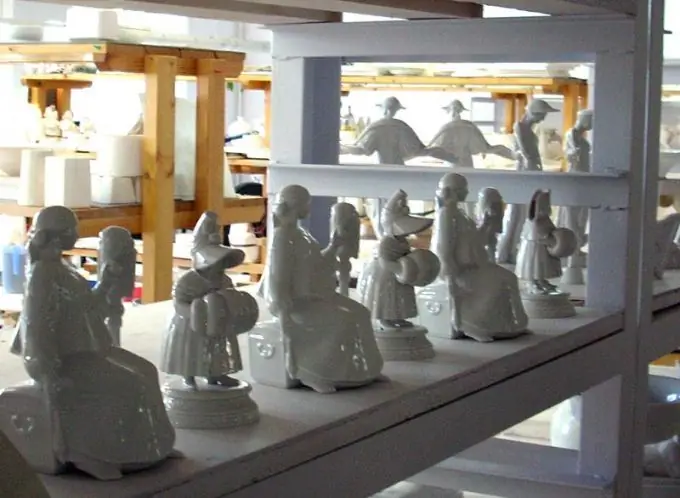
Porcelain figurines of the Imperial (Lomonosov) Porcelain Factory are valued all over the world. It was here that they began to produce porcelain for the first time in Russia (the factory was founded back in 1744), and the "stake" was made on highly artistic products, which include statuettes.
"Dolls" - figurines of animals and people - have been produced at the Imperial Factory since the middle of the 18th century. One of the most famous "pre-Soviet" sculptural collections of the IPE is the "Peoples of Russia" (about a hundred sculptures depicting men and women representing the peoples inhabiting the Russian Empire and dressed in national costumes). Later, the famous series was supplemented by "professional" types, representing St. Petersburg industrialists, artisans and merchants.
The technology for the production of porcelain sculptures has practically not changed since then - no mechanization, only manual work.
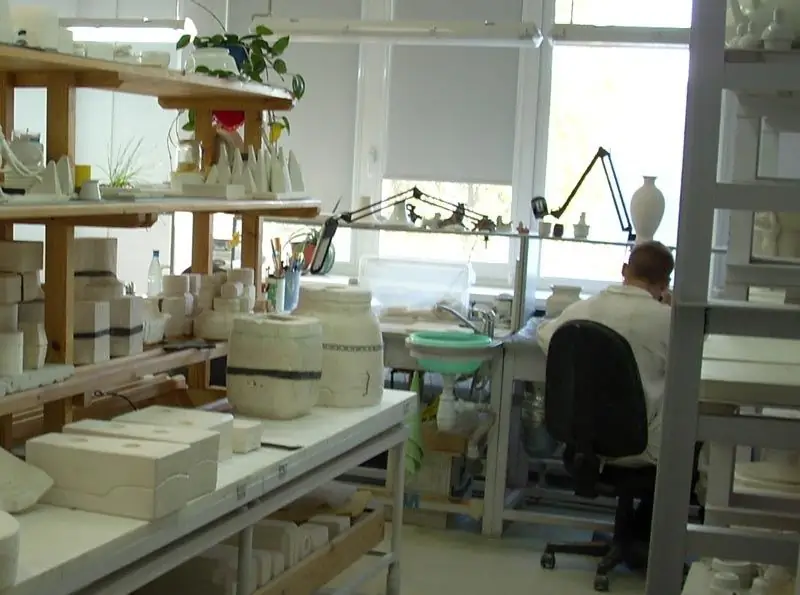
Venue: workshop of highly artistic products
In the modern workshop of highly artistic products of the IPE of what could be called "equipment" - only a kiln for firing. Everything else is done by the hands of craftsmen. "At the entrance" - a semi-liquid porcelain mass (it is called a slip), "at the exit" - snow-white porcelain figurines. There is no "division of labor" here, and each statuette is created by one person who combines the professions of a caster, a setter, and a glazer.
Some of the products are then sent to the painting workshops - for painting, and those products that should remain white are created here on a turnkey basis. On the shelves with samples, the heroes of The Nutcracker by Mikhail Shemyakin coexist with vases from the period of Alexander I, avant-garde sculptures of the 1920s - with modern figurines of judoists.
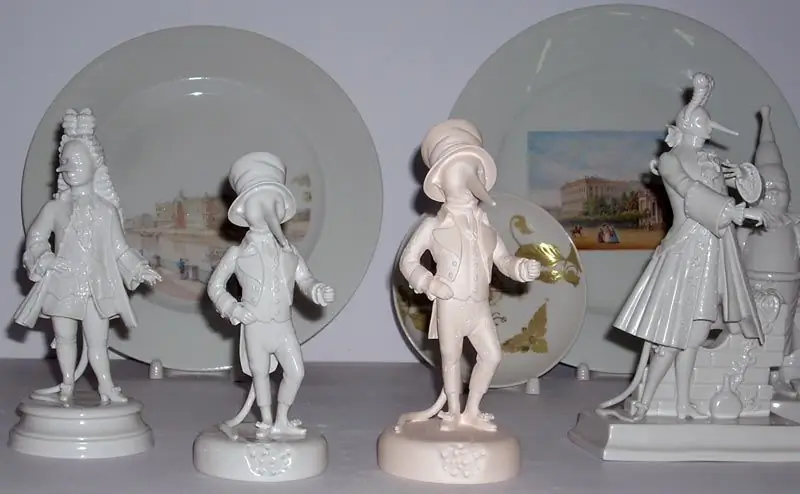
The plant produces a large number of so-called "replicas" (reruns) - models of the past are still in demand, having become "classics". But it is not as easy as it seems to repeat a "production" porcelain figurine, even if there is a sample. During firing, the porcelain is "baked", and the finished product is reduced in size - by 16-18%. Therefore, the sculptor first needs to create an enlarged model, and then "dismember" it into parts that are convenient for casting and assembly.
For each part, a separate detachable plaster mold is made - depending on the complexity of the sculpture, the number of elements can range from three to ten. Forms are stored directly in the workshop - on huge racks, numbered and signed. For example, like this: “Lenin in Smolny. Detail / Legs.

From detail to whole
The porcelain figurines are hollow inside. And the creation of the figurine begins with the casting of the details. For this, the form intended for a fragment of the sculpture is filled with slip - a porcelain mixture reminiscent of sour cream. Gypsum gradually picks up moisture - and, as a result, a grayish "crust" forms on the inner walls of the mold in a few hours. When it gains the required thickness, excess slip is poured out, the parts are allowed to dry and carefully removed from the mold. During the firing process, the gray particles will burn out and the porcelain will acquire its famous white color.
Now all parts of the sculpture must be put together - and, preferably, "without seams." The parts are glued together with the same slip, only thicker - the surfaces of the butt areas are coated with a porcelain mass, and the parts are connected.
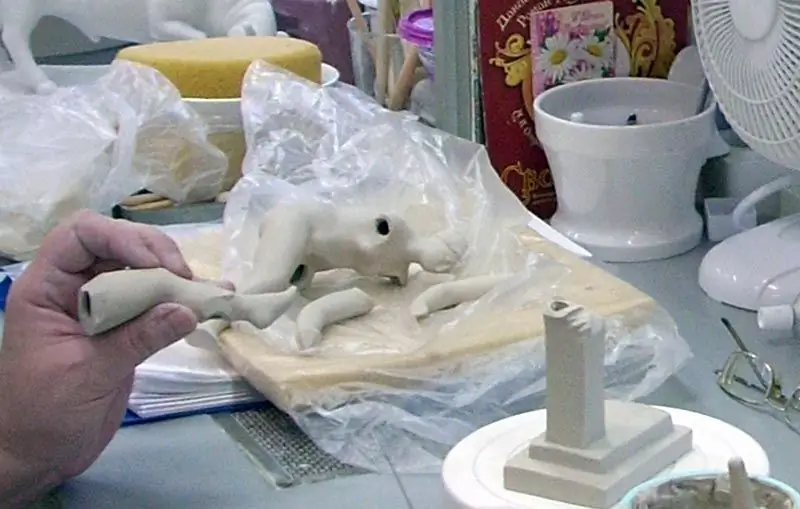
After that, the assembled figurine should dry up - either by standing in the air for a day, or by going to a "dryer" with warm air.
The path to gloss
After drying, processing of the figurine begins "dry": it is necessary to clean up the seams left after casting and, using wet brushes and sponges, bring the surface of the product to perfection, removing irregularities.
And now the surface is finished to perfection. But a flaw may lie inside the shard - for example, invisible cracks, which will manifest themselves only during firing, turning the product into a final marriage. Hidden defects can be detected by kerosene or fuchsin control. The statuette is tinted with magenta ink - and the hidden cracks immediately "appear", giving a darker color. In this case, the product turns from pure white to white with purple streaks. But this is not scary: during firing, the pigment will burn out without residue.
Now, to get a shiny product at the end, you need to cover it with a thin layer of glaze. Glazing is not an obligatory "point of the program" - unglazed porcelain with a white matte, fine-pored surface (biscuit) also happens, but is quite rare.
The glaze consists of the same materials as porcelain, only in a different percentage, in addition, marble and dolomite are added to it. During firing, the glaze melts to form a shiny glossy surface.
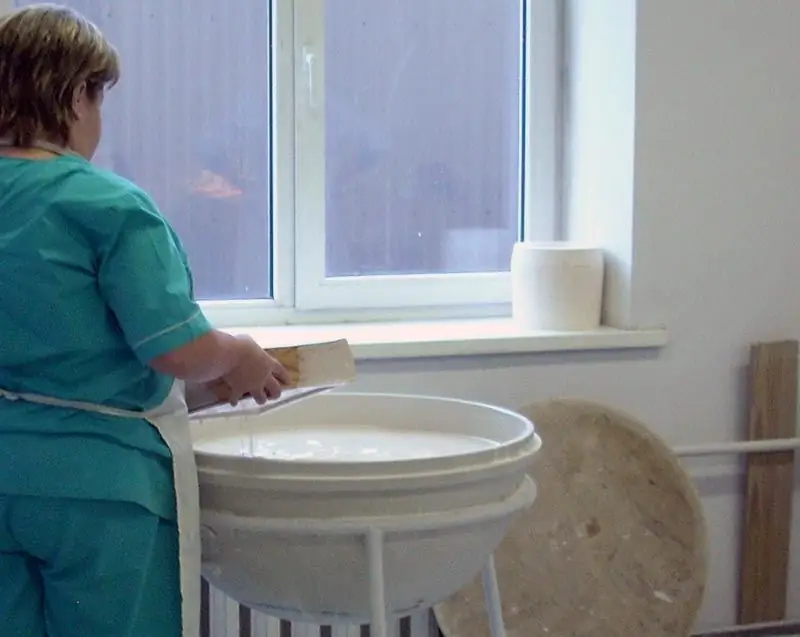
Highly artistic products are glazed by hand: the figurine is taken in hands and dipped in a vat of glaze. The surface of the unfired porcelain is porous - and the glaze is absorbed into it in a matter of seconds. The glaze layer must be very thin, otherwise the glaze may wrinkle during firing.
Large sculptures are glazed in two steps, dipping into the vat first with one side and then with the other. Miniature products are "bathed" entirely. Of course, in those places where the glazer's fingers touch the product, "bald spots" appear, which are then smeared with a brush. Fortunately, all hollow sculptures have a hole (most often, in a stand) - it is necessary so that hot air does not "tear" the figurine during firing - and, if the hole diameter allows, the figurine is glazed, put on a finger, or other solutions are invented. "Achilles heel problems."
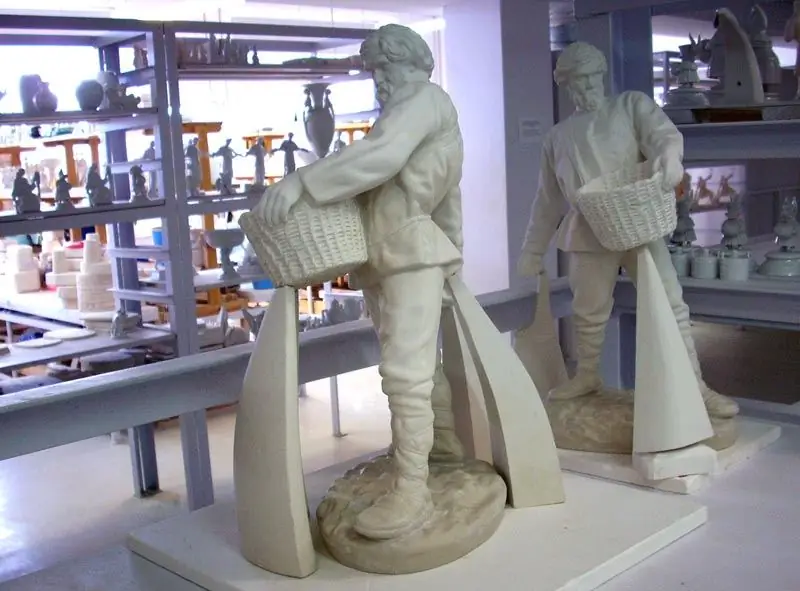
Now the product is placed on a stand (tall sculptures that can “twist” during firing are additionally fixed with additional refractory “props”). And - into the oven, at a temperature of 1400 degrees - a snow-white porcelain miracle will come out of it in a day.






